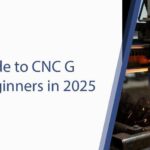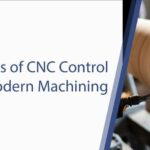Robotics and Automation Systems in CNC Technology — The Next Industrial Leap
The integration of CNC (Computer Numerical Control) technology with robotics and automation systems has redefined the future of manufacturing.
This intelligent combination enhances speed, precision, consistency, and scalability, allowing production environments to evolve into fully automated, data-driven ecosystems.
While CNC machines have long been known for their accuracy, pairing them with robotics and automation creates an entirely new level of efficiency. Together, they eliminate repetitive manual work, reduce human error, and enable continuous, around-the-clock production — the foundation of modern Industry 4.0 operations.

Benefits of Robotics and CNC Integration
The fusion of robotics with CNC technology delivers measurable advantages across every stage of production. Manufacturers can achieve higher throughput, improved product consistency, and reduced cycle times — all while maintaining precision and minimizing labor dependency.
Key operational benefits include:
- 24/7 automated production: Robots sustain an uninterrupted workflow with consistent accuracy.
- Lower error margins: Automated handling ensures part alignment and repeatability.
- Enhanced productivity: Faster changeovers and synchronized operations between robots and CNC units.
This synergy not only elevates manufacturing performance but also positions businesses to meet global standards in cost-efficiency and reliability.
The Role of Robotic Systems in CNC Manufacturing
Robotic systems play an essential role in modern CNC production lines. From material handling and part loading to assembly and inspection, these systems work alongside CNC machines to streamline every phase of production.
For instance, robotic arms in aerospace manufacturing precisely position complex components, while in automotive assembly, they manage repetitive welding and alignment tasks with unmatched precision. By handling dangerous or repetitive operations, robots reduce risks, increase production safety, and improve overall workflow efficiency.

Optimization Through Automation Systems
The integration of automation systems with CNC technology further enhances performance and accuracy. Components like Programmable Logic Controllers (PLCs), IoT sensors, and edge monitoring devices ensure that CNC machines operate within exact parameters.
Automation systems can measure part geometry in real time, analyze deviations, and automatically recalibrate CNC programs. This ensures near-zero tolerance errors and stable product quality throughout the production cycle.
These intelligent controls not only improve machining precision but also reduce waste and extend machine lifespan — essential for maintaining cost-effective production at scale.
Data Analytics Driving Smart CNC Operations
Data analytics has become a central element in the CNC and automation ecosystem. Modern factories collect and analyze massive volumes of operational data, including energy use, tool wear, machine downtime, and quality output.
By leveraging these insights, production managers can:
- Detect inefficiencies in real time.
- Predict equipment failures before they occur.
- Optimize scheduling and resource utilization.
The outcome is a smarter, leaner, and more predictive manufacturing process that evolves continuously through feedback-driven optimization.

Energy Efficiency and Sustainable Manufacturing
Energy efficiency stands as one of the most valuable outcomes of integrating CNC technology with automation. Smart power management ensures machines consume energy only when required, drastically reducing operational costs.
In sectors such as automotive and electronics, intelligent automation systems have helped lower carbon footprints by optimizing idle time and regulating machine loads. This not only enhances sustainability but also aligns manufacturers with global energy efficiency and environmental standards.
Enhancing Workplace Safety
Beyond efficiency and precision, robotics integration significantly improves workplace safety. Robots perform tasks in hazardous environments — including those involving extreme heat, chemicals, or heavy lifting — preventing human exposure to dangerous conditions.
Fully automated production lines also minimize human intervention, reducing the likelihood of accidents and fatigue-related errors. This allows manufacturers to maintain both continuous operation and a safer working environment, reinforcing long-term workforce well-being.
The Future of CNC, Robotics, and Automation
The future of manufacturing lies in the deep integration of CNC technology, robotics, and artificial intelligence (AI). As AI and machine learning algorithms mature, they enable predictive corrections, real-time optimization, and adaptive control of CNC processes.
Emerging technologies such as digital twins — virtual replicas of production systems — will allow manufacturers to simulate, monitor, and optimize operations before physical execution. These advancements promise to reduce downtime, accelerate innovation, and set new global benchmarks for productivity.
Conclusion — Radonix and the New Era of Automated CNC Systems
The convergence of CNC technology, robotics, and automation marks a pivotal shift toward intelligent manufacturing — and Radonix is leading this evolution. By integrating advanced CNC controllers with robotic coordination and smart automation, Radonix empowers industries to achieve unprecedented efficiency and scalability.
This transformation delivers real-world impact:
- Accelerated production lines and zero-interruption workflows.
- Automated quality assurance and real-time corrections.
- Optimized energy use and sustainable operation.
- Enhanced workplace safety through intelligent robotics.
For manufacturers aiming to stay competitive, the adoption of CNC technology with robotics and automation is not just an innovation — it’s a strategic imperative. With Radonix, the future of industrial production is faster, smarter, and more sustainable than ever.
Contact Us:
- E-Mail: info@radonix.com
- Phone: +90 (553) 920 5500








